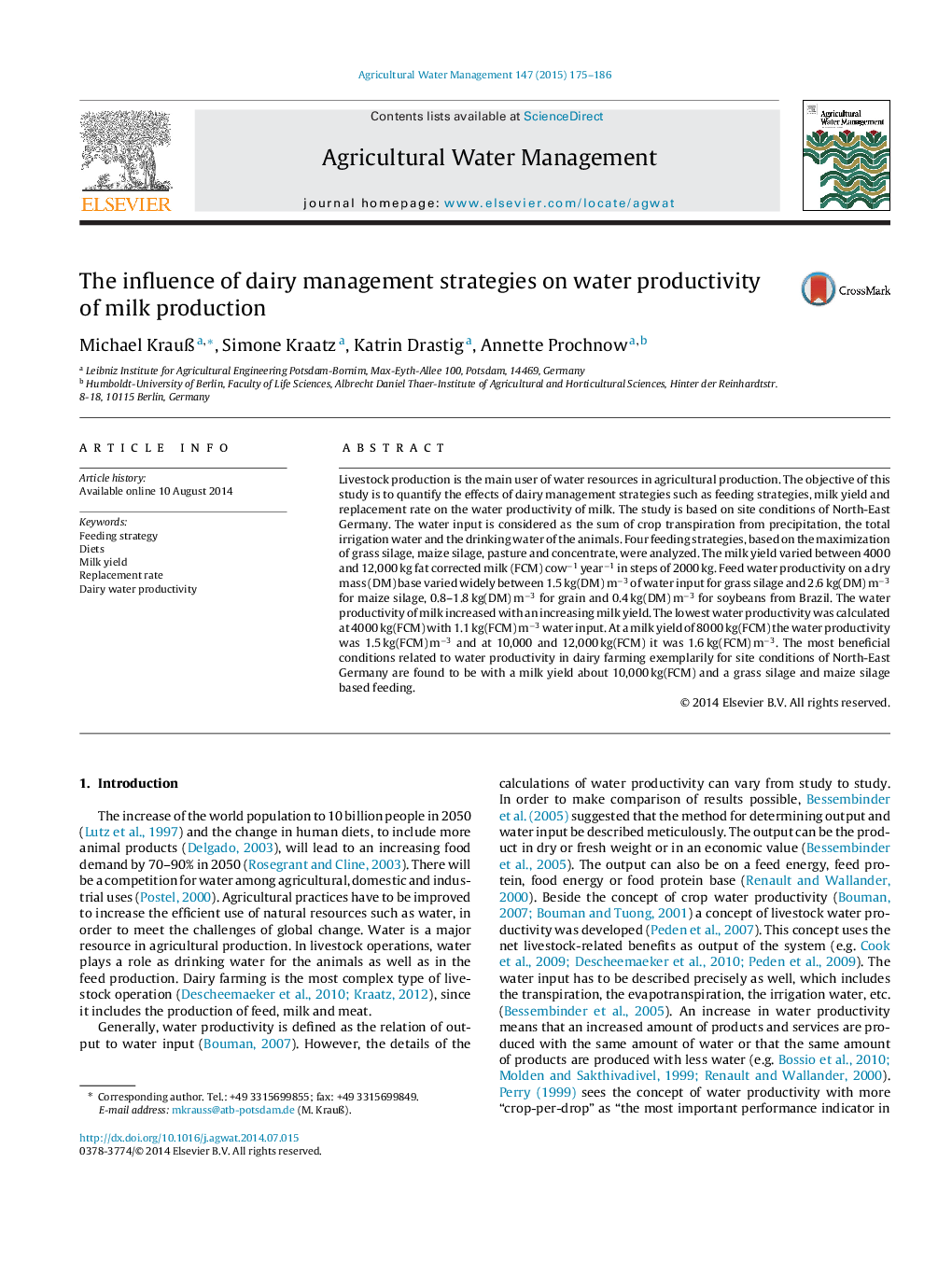| Article ID | Journal | Published Year | Pages | File Type |
|---|---|---|---|---|
| 4478585 | Agricultural Water Management | 2015 | 12 Pages |
•Investigation on water productivity of 56 combinations of diets and milk yields.•Water use for feed production, drinking and replacement was considered.•Milk yield has the strongest influence on water productivity.•An increasing milk yield increases the water productivity of milk.•More roughage and less concentrate increases water productivity of milk.
Livestock production is the main user of water resources in agricultural production. The objective of this study is to quantify the effects of dairy management strategies such as feeding strategies, milk yield and replacement rate on the water productivity of milk. The study is based on site conditions of North-East Germany. The water input is considered as the sum of crop transpiration from precipitation, the total irrigation water and the drinking water of the animals. Four feeding strategies, based on the maximization of grass silage, maize silage, pasture and concentrate, were analyzed. The milk yield varied between 4000 and 12,000 kg fat corrected milk (FCM) cow−1 year−1 in steps of 2000 kg. Feed water productivity on a dry mass (DM) base varied widely between 1.5 kg(DM) m−3 of water input for grass silage and 2.6 kg(DM) m−3 for maize silage, 0.8–1.8 kg(DM) m−3 for grain and 0.4 kg(DM) m−3 for soybeans from Brazil. The water productivity of milk increased with an increasing milk yield. The lowest water productivity was calculated at 4000 kg(FCM) with 1.1 kg(FCM) m−3 water input. At a milk yield of 8000 kg(FCM) the water productivity was 1.5 kg(FCM) m−3 and at 10,000 and 12,000 kg(FCM) it was 1.6 kg(FCM) m−3. The most beneficial conditions related to water productivity in dairy farming exemplarily for site conditions of North-East Germany are found to be with a milk yield about 10,000 kg(FCM) and a grass silage and maize silage based feeding.
